GAP Investments provides tailored financing solutions for investors in Costa Rica, understanding the unique needs…
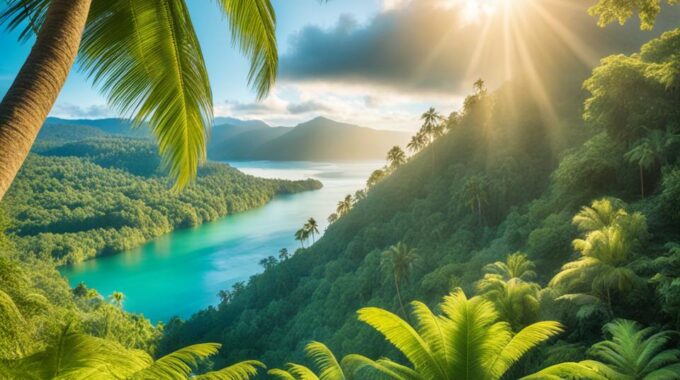
Weather and Climate in Costa Rica – What You Need to Know
Costa Rica is in a special spot, right between the Tropics of Cancer and Capricorn. This location gives it a mix of weather that’s always changing. Home to mountains, coasts, and part of the Central American isthmus, it has a lot to offer. These diverse landscapes, combined with wind and ocean effects, create its unique weather.
Key Takeaways
- Costa Rica’s tropical climate is influenced by its mountainous terrain, coastal regions, and location on the Central American isthmus.
- The country experiences distinct dry and rainy seasons, with temperature and rainfall patterns varying across different regions.
- Elevation, proximity to oceans, and trade winds all play a significant role in shaping Costa Rica’s microclimates.
- The dry season from December to April and the rainy season from May to November offer unique advantages for visitors.
- Reliable weather forecasting and packing the right gear are essential for navigating Costa Rica’s diverse and unpredictable weather conditions.
Understanding Costa Rica’s Geographical Diversity
Costa Rica sits in the tropics, defining its lush forests, rich waters, fertile soils, and warm climate. This setting supports diverse plants and animals that thrive under these tropical conditions.
Location and Tropical Setting
Located between the Tropic of Cancer and the Tropic of Capricorn, Costa Rica enjoys a tropical paradise. Its position on the Central American isthmus and varied landscapes creates many microclimates.
Influence of Mountain Ranges
Costa Rica’s mountain ranges run from northwest to southeast. This split the nation into two zones, the Pacific and the Caribbean sides. Each area has its own weather with unique rain and temperature patterns.
Coastal Regions
In Costa Rica, the Pacific region and the Caribbean region experience different seasons. The Pacific notes dry and rainy times while the Caribbean stays wet all year. These distinctions happen because of the country’s special geography and place.
Seasonal Patterns: Dry and Rainy Seasons
Costa Rica has two main seasons: a dry one and a rainy one. It’s essential to know about these cycles for your trip to costa rica, especially if you want to avoid rain or experience lush greenery.
Dry Season (December to April)
The dry season is from December to March on the Pacific side. April marks a shift to rainier days. March is the driest and hottest month during this time.
Rainy Season (May to November)
From May to October, it’s the rainy season in areas like the Pacific. November starts to dry up. Interestingly, July and August see less rain, called the “little summer” months.
Transition Months
April and November work as the shift between dry and wet seasons. The weather in these transition months can be hard to predict. This makes planning a bit trickier.
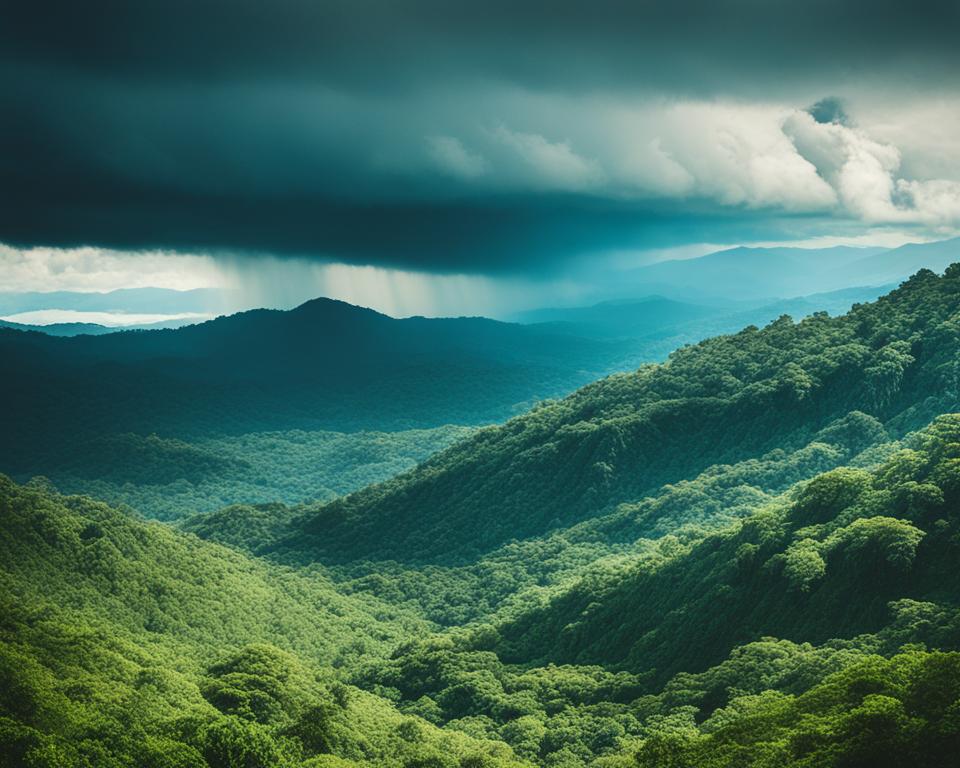
Weather and Climate in Costa Rica
Temperature Variations
In Costa Rica, temperatures don’t change a lot during the year. They might just vary by a few degrees. The coasts can be quite warm, from 80°F to 90°F. Yet, you’ll find cooler weather in the mountains, ranging from 70°F to 80°F. This mild weather happens because Costa Rica is near the equator. This means the seasons don’t change too much.
Rainfall Patterns
Costa Rica has different rainfall patterns. By the Pacific side, there are distinct dry and wet seasons. The dry period is from December to April. Then, it rains from May to November. The Caribbean side gets rain all year, except for a little break in February-March and September-October.
Humidity Levels
Costa Rica is usually pretty humid, especially in the rainy season. The Caribbean coast and southern Pacific can be very humid, over 80%. The Central Valley and highlands are a bit less humid. But they’re still pretty moist, not as much as the coasts, though.
Regional Climates in Costa Rica
Costa Rica’s diverse geography leads to many regional climates. From the dry Guanacaste to the rainy Caribbean, there’s so much to explore. Each region has its unique feel, drawing in different kinds of travelers.
Guanacaste
In the northwest, Guanacaste stands out for its weather. It goes from a long dry season in December to March to heavy rains from May to August. In between, September to November brings a second, shorter wet period. Places like Tamarindo are very dry, not getting much rain. The hottest time here is in March to May, before the rains. Guanacaste also deals with strong winds, known as Papagayo. These winds can get up to 70 mph from December to March.
Central Pacific
The Central Pacific area has a lot of rain, with a tropical climate. A short dry period is followed by very heavy rains. This makes the region green and full of life. The south part gets a lot of rain, turning it into a lush area.
South Pacific
The South Pacific, including the Osa Peninsula, gets a ton of rain. It’s the wettest part of the country, with over 3,500 mm falling each year. With a tropical climate and a short dry season, it stays warm and humid all year.
Central Valley
The Central Valley enjoys a mild climate, cool and comfortable. It has a dry and a rainy season, making it pleasant year-round. This area is popular with expats and retirees, thanks to its agreeable weather.
Northern Plains
The Northern Plains is known for being very wet, with over 3,200 mm of rain each year. Rain falls from May to December or sometimes January. As a result, it’s a beautiful, green part of the country.
Caribbean Coasts
The Caribbean coast is always lush because it rains regularly, all year. There are some slightly drier times in February-March and September-October. Known for its warm, wet weather, this region is a tropical paradise.
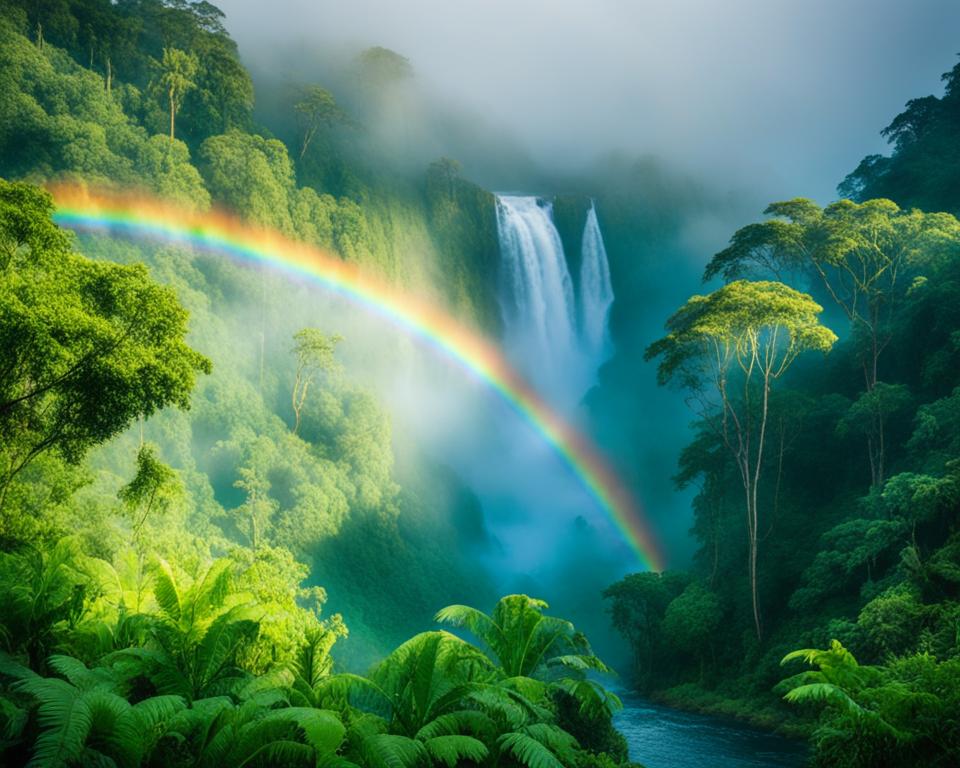
Microclimates and Local Weather Patterns
Costa Rica has a diverse geography. It includes mountains, valleys, and coastal areas. Because of this, the country has many different microclimates.
Weather can be quite different in small areas. This makes predicting and planning weather hard. Many things like elevation, ocean closeness, and wind paths affect the weather.
For instance, the Caribbean coast is always warm and wet. But the South Pacific coast is wetter than the Central Pacific. The Guanacaste province in the northwest gets little rain and has a long dry season.
| Region | Rainfall Patterns | Temperature Range | Humidity Levels |
|---|---|---|---|
| Caribbean Coast | Steady rainfall throughout the year, with slightly drier periods in February-March and September-October | 80°F to 90°F | High |
| South Pacific Coast | Hot and humid, with dry conditions from December to April | 80°F to 90°F | High |
| Guanacaste Province | Long dry season from December to March, followed by a rainy season from May to August and a second rainy period from September to November | 80°F to 90°F | Low |
These different climates and weather patterns make Costa Rica unique. Each area has its own special temperature and humidity. This makes Costa Rica a wonderful place for any traveler.
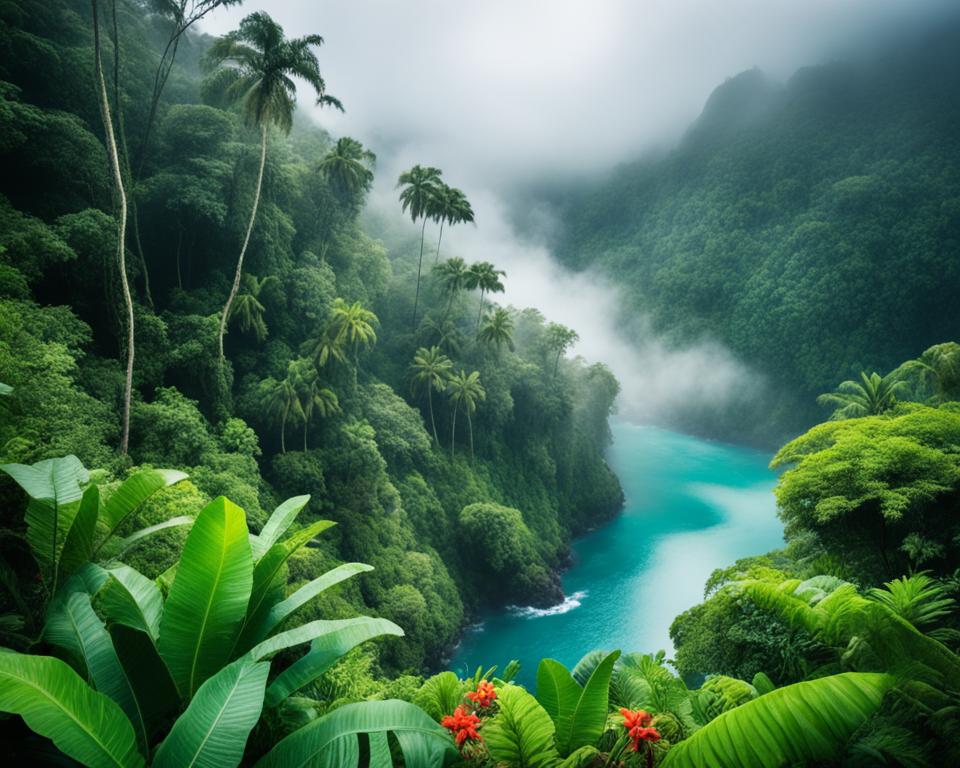
Factors Influencing Costa Rica’s Climate
Costa Rica’s weather is a mix of many influences. These include its location, mountains, and oceans. These elements work together to create a unique climate and many different weather zones across the country.
Elevation
Elevation greatly affects Costa Rica’s weather. Places that are higher up tend to be cooler and get more rain. For example, the Cordillera de Talamanca mountains are much cooler and wetter than the beaches.
Proximity to Oceans
The country sits between the Pacific and Caribbean seas. This means it gets effects like more humidity and different wind patterns. The oceans also affect where and how much rain falls.
Trade Winds and Ocean Currents
Trade winds and ocean currents are also big players in Costa Rica’s climate. They set the seasons and help create the variety in temperatures and rainfall. This mix gives Costa Rica the unique weather it is known for.

Best Time to Visit Costa Rica
The best time to visit Costa Rica is from December to April. This period is the dry season. You’ll see clear skies, feel the low humidity, and enjoy warm weather. It’s perfect for those wanting to experience weather and climate in costa rica, tropical climate, and costa rican weather patterns.
Dry Season Highlights
The dry season is called “verano” (summer) locally. It’s the peak time for good weather in dry season in costa rica. Outdoor activities are very doable during this time. The tropical forests and wildlife sightings are amazing, which is ideal for nature lovers and adventurers.
Rainy Season Advantages
From May to November, rainy season in costa rica brings some showers. But it has its own benefits. The country turns into lush, green landscapes during this time. You’ll also find fewer tourists, which makes it a cheaper and quieter season. Plus, you can enjoy whale watching and river rafting.
| Season | Dates | Characteristics |
|---|---|---|
| Dry Season | December – April | Clear skies, low humidity, warm temperatures, peak for wildlife and outdoor activities |
| Rainy Season | May – November | Sporadic showers, lush green landscapes, fewer crowds, opportunities for unique experiences |
Costa Rica has something to offer in every season, whether you like dry or rainy times. It’s a place with various weather and climate patterns that appeal to tropical climate and weather enthusiasts.
Weather Forecasting and Travel Planning
Planning a trip to the tropical climate of Costa Rica means checking weather resources and forecasts is a must. The diverse microclimates in the country can be tricky for predicting weather conditions overall. Knowing about regional weather patterns and seasonal changes helps travelers plan their Costa Rican adventure better.
Reliable Weather Resources
There are many weather forecasting websites and apps that keep you updated on the weather and climate in Costa Rica. These tools give detailed information on temperature ranges, rainfall levels, humidity, and more. By keeping an eye on these weather reports, visitors can choose the best times to visit different places in the country.
Packing and Preparation Tips
Costa Rica’s weather can be very different, so it’s key for travelers to pack right. Be sure to bring layers of clothing, rain gear, and sun protection. This will help you be ready for the tropical climate and its changes. Correct packing and adapting to weather patterns can make your travel experience much better. It lets you enjoy the amazing landscapes and outdoor activities Costa Rica offers.
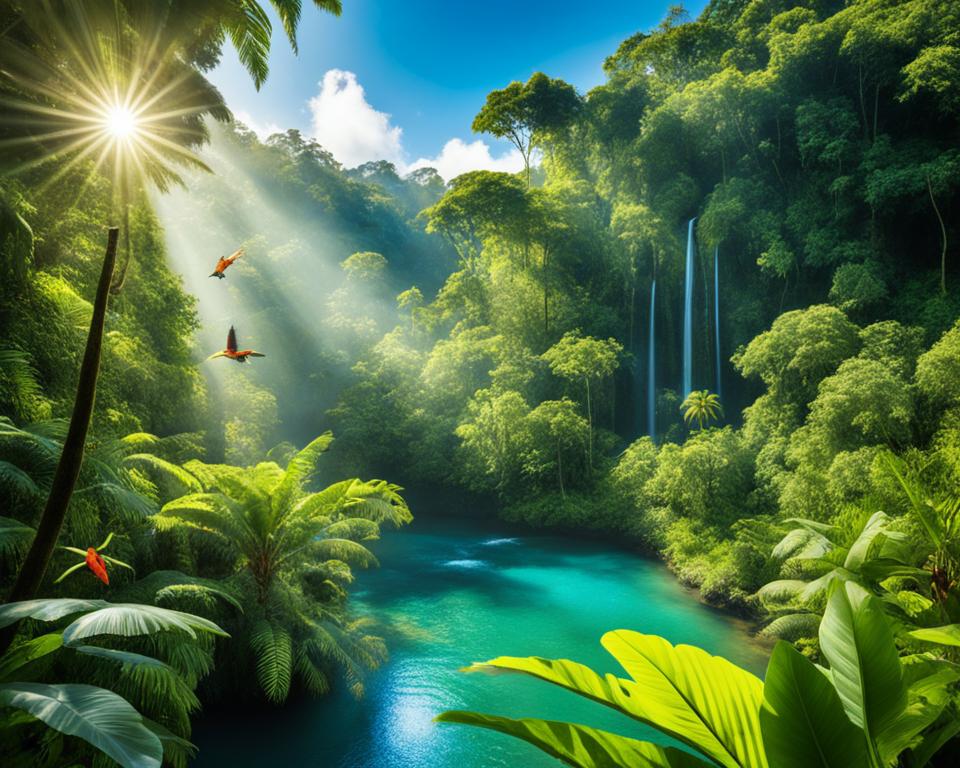
Climate Change Impacts in Costa Rica
Costa Rica is a top player in saving the environment. Even though it’s small, it has almost 6% of the planet’s plants and animals. This makes it really feel the heat of a warming world.
Conservation Efforts
The country is doing a lot to save its nature and fight climate change. It makes 99% of its electricity with clean, renewable sources. The United Nations gave it a special award for its green efforts.
Sustainable Tourism Initiatives
Costa Rica is big on green tourism. It tries to limit how much visitors hurt the environment. Places like the REMAX office there are going green, using things like special AC units and LED lights. They also don’t print as much to help the earth.
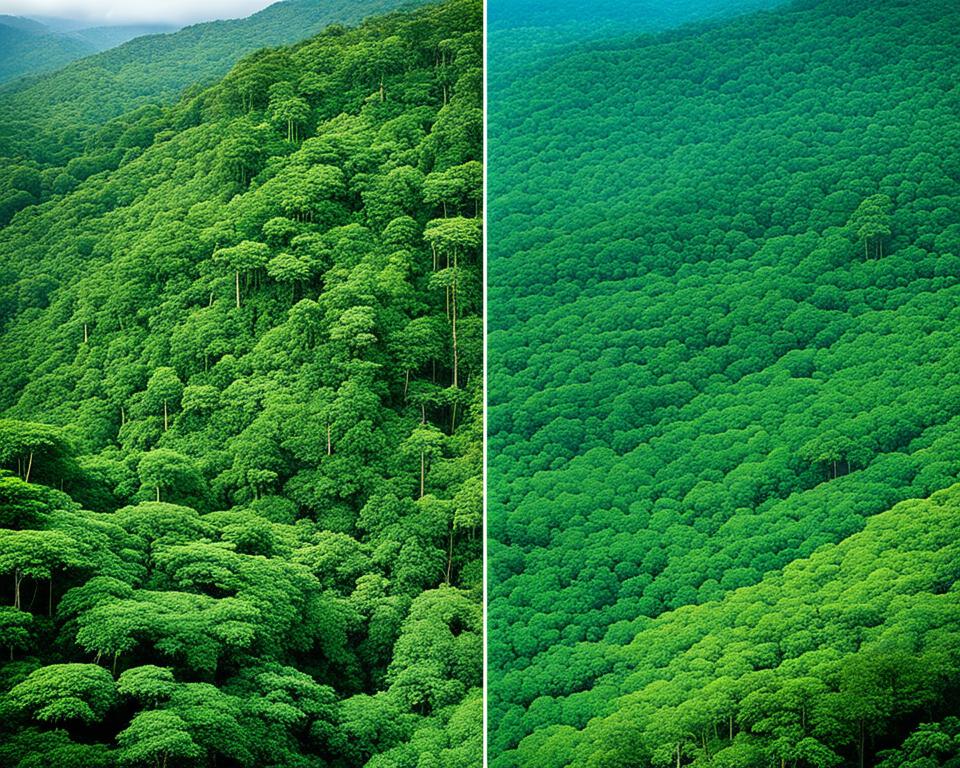
But, Costa Rica still faces problems from climate change. It’s seen big changes in the weather, like severe El Niño, long periods with no rain, and very heavy rains. These have led to landslides and floods. It’s expected to get 3–6 degrees hotter by 2070, which could be bad news for its many plants and animals.
The country is still focusing on saving the planet. It’s all about using more clean energy, helping tourism be greener, and making laws to keep nature safe. This is how Costa Rica is showing the world how to fight climate change impacts in costa rica, costa rican weather patterns, costa rican climate change, sustainable tourism in costa rica, and environmental conservation in costa rica.
Conclusion
Costa Rica has many different climates due to its varied geography and location near the equator. This makes it a very interesting place to visit for tourists. It’s wise for visitors to learn about the weather in different seasons and areas. This way, they can plan better for their trip to Costa Rica.
In the northwest, Guanacaste has dry, sun-filled beaches. In contrast, the Caribbean coast is rich with green rainforests. Visitors will find that elevations, ocean closeness, and wind directions affect the weather. Understanding these factors helps make the trip more enjoyable.
Travelers can choose to visit during the dry or rainy periods, both offering unique experiences. Before their trip, it’s smart to check the weather forecasts and pack right. This preparation ensures a great visit to Costa Rica’s many beautiful places.
FAQ
What is the general climate and weather pattern in Costa Rica?
Costa Rica is in the tropics and has a tropical climate. It’s affected by the country’s geography and its place on the Central American isthmus. There are distinct dry and rainy seasons with lots of different weather across the country.
How do the Pacific and Caribbean regions differ in terms of weather and climate?
The Pacific area has clear dry and rainy seasons. In contrast, the Caribbean side gets rain all throughout the year.
What are the typical temperature and rainfall patterns in Costa Rica?
In Costa Rica, temperatures don’t change much during the year, usually by a few degrees. The coasts are hotter than the mountains. Rainfall varies, with a clear pattern on the Pacific side and more consistent rain on the Caribbean side.
How do the different regions of Costa Rica vary in terms of climate?
Costa Rica’s geography creates various climates. Places like Guanacaste, the Central Valley, and the Caribbean coast each have unique weather patterns.
What factors influence the climate and weather in Costa Rica?
Elevation, and the closeness to the Pacific and Caribbean Seas are key. Ocean currents and winds also play a big role in the country’s weather.
What is the best time of year to visit Costa Rica?
The dry season, from December to April, is the top choice. The weather is clear and there’s less rain. But, the rainy season, from May to November, has its merits, like whale watching and luscious greenery.
How can travelers plan for the weather and climate in Costa Rica?
Check the weather often due to the country’s varied microclimates. Bring clothes for both rain and shine to be ready for anything.
How is Costa Rica addressing the impacts of climate change?
Costa Rica is actively fighting climate change. They’re working to protect their environment and encourage eco-friendly tourism. This aims to keep their natural wonders intact for future generations.
Source Links
- https://costarica.org/facts/climate/
- https://www.visitcostarica.com/en/costa-rica/climate
- https://costarica.org/facts/geography/
- https://jameskaiser.com/costa-rica-guide/weather/
- https://costarica.org/facts/dry-wet-season/
- https://costa-rica-guide.com/travel/weather/seasons-in-costa-rica/
- https://internationalliving.com/countries/costa-rica/climate-in-costa-rica/
- https://www.govisitcostarica.com/travelInfo/general/micro-climates.asp
- https://costa-rica-guide.com/travel/best-time/when-to-visit/
- https://ticotimes.net/costa-rica-weather-forecast
- https://www.copadearbol.com/weather-in-costa-rica/
- https://www.remax-oceansurf-cr.com/climate-change-how-it-is-affecting-costa-rica
- https://ticotimes.net/2024/03/25/weathering-the-heat-reflections-on-climate-change-in-costa-rica
- https://www.remax-oceansurf-cr.com/costa-rica-climate


